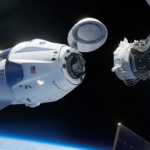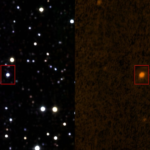International space scientific and exploration initiatives will move forward more quickly thanks to a £7.4 million grant from the UK Space Agency.
The Space Science and Exploration Bilateral Programme is one of the initiatives that will receive financing; under it, Royal Holloway will build software for the Chandrayaan-2 orbiter of the Indian Space Agency. The detection of ice beneath the lunar south pole will be aided by this method.
In a different initiative, the University of Leicester will take the lead in developing a Raman spectroscopy tool for iSpace’s commercial lander and rover missions that aim to study the Moon’s water ice. The goal of the space exploration project is to gain a better understanding of the resource’s potential utility for longer-term lunar exploration.
Additional projects to split the funds include the Open University collaborating with NASA, the Canadian Space Agency (CSA), and the Japan Aerospace Exploration Agency (JAXA), as well as the universities of Sussex, Aberdeen, and Cambridge.
The Chief Executive of the UK Space Agency, Dr. Paul Bate, stated: “These projects offer UK science a vital opportunity to contribute to innovative international missions that will enhance our understanding of the Moon and our neighbouring planets.”
Cooperation with international partners
The announcement and this week’s Global Space and Technology Convention (GSTC) in Singapore align. Asia’s expanding space industry and prospects for cross-border cooperation will be highlighted at the convention.

The space exploration initiatives and the presence of a UK delegation at the GSTC demonstrate how the National Space Strategy, which is in place in the UK, encourages its scientists’ collaboration with international partners.
One of UKspace’s Space, Science, and Exploration Committee Chair, Marie-Claire Perkinson, stated: “Building strong relationships through these projects is a key step towards future industrial collaboration.”
British space science leadership
The space projects have already gotten £400,000 in total after an initial funding round.
They stand for both the scientific brilliance of the UK in vital domains of space science and exploration technologies, including pipeline processing, optics and spectroscopy, and detector hardware development.

Collaborating with international colleagues who are advancing comparable fields is another opportunity that the projects offer.
Regarding the space projects
Among the initiatives that have been funded are:£306,000 for
Chandrayaan-2 and Shukrayaan (Royal Holloway and ISRO, India).
In order to find subsurface ice near the lunar south pole, the project is in charge of analysing multi-band radar data and creating analysis tools.

Star-X – £650,000 (University of Leicester and NASA, US)
The project will create high-level science data to understand the origin of the Universe through multi-messenger astrophysics and the time-domain approach.
Read More Articles
Large, dead satellite will return to Earth the next week
The Significance of Genetic Diversity and Hybridization in Blue Whales and Climate Change
FIR missions: £1.1 million (University of Sussex and NASA, US)
Superconducting detectors, detector systems, filters, optics, and data pipelines are available. A probe expedition to study the creation of planetary systems and the development of galaxies might make use of this technology.

HABIT: £320,000 (JAXA, Japan and the University of Aberdeen)
For a Mars rover researching the water cycle, chemistry, and habitability, the cash will be used to construct an instrument to measure air and ground temperature, wind, humidity, and hydration condition of salts.
CosmoCube (NASA, US and the University of Cambridge) – £1.5 million
In order to quantify spectral aberrations in the cosmic microwave background of the universe, the team will design a cube-sat mission and space platform that will carry a precise radiometer.










